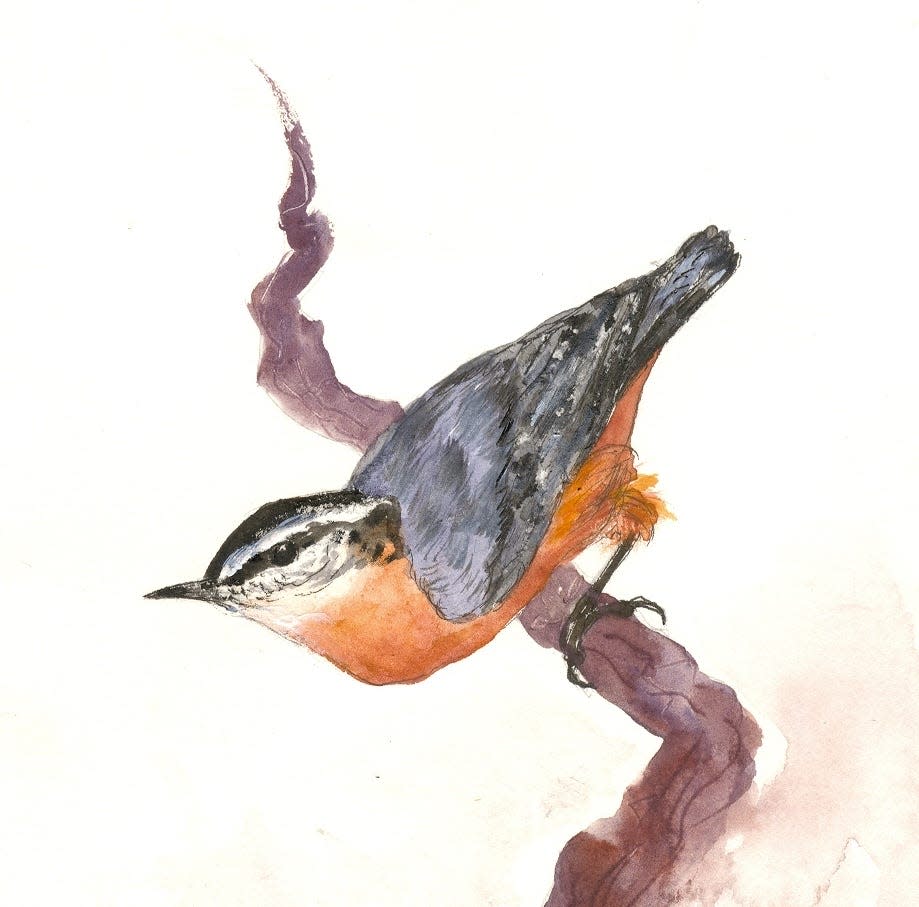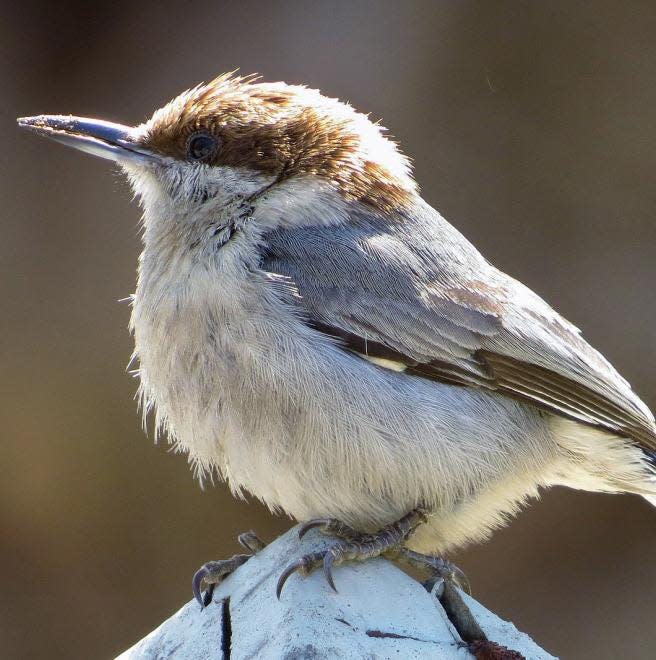Nature Journal: White-breasted nuthatches frequent backyard feeders
I was having a bird discussion with a woman some years ago when she made mention of "the upside-down bird" that was appearing outside her kitchen window. I knew right away that she meant a nuthatch, as they almost always feed in a headfirst spiral down a tree trunk to nearly ground level before flying back up into the top of a nearby tree, where the “upside-down” procedure is repeated.
Throughout the year, nuthatches are among my favorite birds to study. By "study" I mean that I like to settle down and observe their activities for an extended period. When observing many birds, I'll simply make a mental note that I'm seeing or hearing them — robin, cardinal, blue jay, catbird, crow, turkey vulture, etc. — and continue on my way. I should do better, but that's the way it is. With nuthatches, however, I never have to prod myself to stop whatever I'm doing and pay closer attention.

Here in Western North Carolina we have three nuthatch species. The white-breasted always announces its presence with insistent nasal "yank-yank-yank" calls. It's such a dapper bird — all decked out in becoming blacks, blue-grays, and whites that resemble a formal suit of clothes — it always seems to have dressed up for some occasion. They are common in woodlands throughout WNC year round. More than any other nuthatch, they frequent backyard feeders, especially where suet has been provided.
The red-breasted has a broad black line through its eye with a white line just above. The bird's undersides are rusty-reddish colored. It's delightful "ank-ank-ank" call is distinctive, having been described as sounding like "a child’s tiny tin horn." You can hear them approaching from a considerable distance. They nest in northern hardwood and spruce-fir forests above 3,000 feet, but in winter they can be found at all elevations.

The brown-headed nuthatch is common to abundant farther south in the open pinelands of the piedmont and coastal plain. As the common name implies, this diminutive species has a brown head. It has a peculiar "kit-kit-kit" vocalization that reminds me of the sounds made by newly-born piglets.
Elizabeth and I have never seen a brown-headed nuthatch in the Smokies region where we reside near Bryson City. I have encountered them periodically at Tiger, Georgia, just over the state line from Franklin; in Franklin; and in Asheville at Beaver Lake..

The “Birds of North America Online” noted that brown-headed nuthatches are endemic to pine forests of the southeastern United States, and rarely venture from pine-dominated areas. It is one of the few cooperatively breeding bird species native to North America, and one of the few birds for which tool use has been documented (individuals use chips of pine bark to pry off other bark chips while foraging) . . . The brown-headed nuthatch’s habit of staying high in the canopy of pines often makes it difficult to observe.”
George Ellison is an award-winning naturalist and writer. His wife, Elizabeth Ellison, is a painter and illustrator who has a gallery-studio at 155 Main St., Bryson City. Contact them at info@georgeellison.com or info@elizabethellisongallery.com or write to 3880 Balltown Road, Bryson City, NC 28713.
This article originally appeared on Asheville Citizen Times: Nature Journal: White-breasted nuthatches frequent backyard feeders

